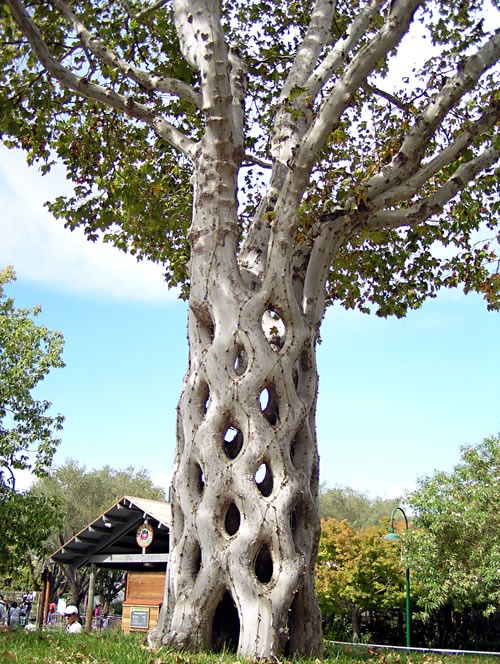To better visualise the concept of spiral shaped trees I began by carving and sanding a block of foam into a spiral shape and adding other pieces to each side to serve as roots and branches.
 I then painted this in several coats of wood stain to give a slightly more tree like appearance.
I then painted this in several coats of wood stain to give a slightly more tree like appearance.
 In order to test the viability of shaping and bending trees around lampposts, I made a small scale lamppost and began attaching tree branches to it and attempting to bend them around the lamppost shape to varying degrees.
In order to test the viability of shaping and bending trees around lampposts, I made a small scale lamppost and began attaching tree branches to it and attempting to bend them around the lamppost shape to varying degrees. The branches were held in place with masking tape for ease of use and have not snapped despite the constant tension for several weeks and counting.
The branches were held in place with masking tape for ease of use and have not snapped despite the constant tension for several weeks and counting.

 However some branches did break during the bending process as I found the limits of the branches’ flexibility and identified weak points, such as bending the branch in an opposite direction to its natural shape.
However some branches did break during the bending process as I found the limits of the branches’ flexibility and identified weak points, such as bending the branch in an opposite direction to its natural shape.
These experiments supplemented secondary research showing the long term results of tree shaping that can be achieved.

(Amusing Planet, 2011)
However large trees can be very obtrusive and the roots destroy the surrounding pavement and street.
 Therefore the project shifted to focus on shaping Wisteria vines. They can also be shaped using the same techniques but are smaller and less invasive. Furthermore they have bright pink flowers which suits the product design specification that the product should be colourful and eye catching. The products will make use of guide ropes for the wisteria to grow along in order to create the desired connected network.
Therefore the project shifted to focus on shaping Wisteria vines. They can also be shaped using the same techniques but are smaller and less invasive. Furthermore they have bright pink flowers which suits the product design specification that the product should be colourful and eye catching. The products will make use of guide ropes for the wisteria to grow along in order to create the desired connected network.

(WholeHearted Leaders, 2015)

